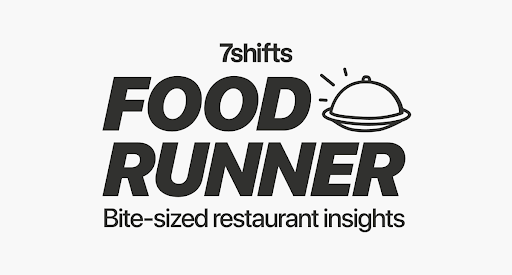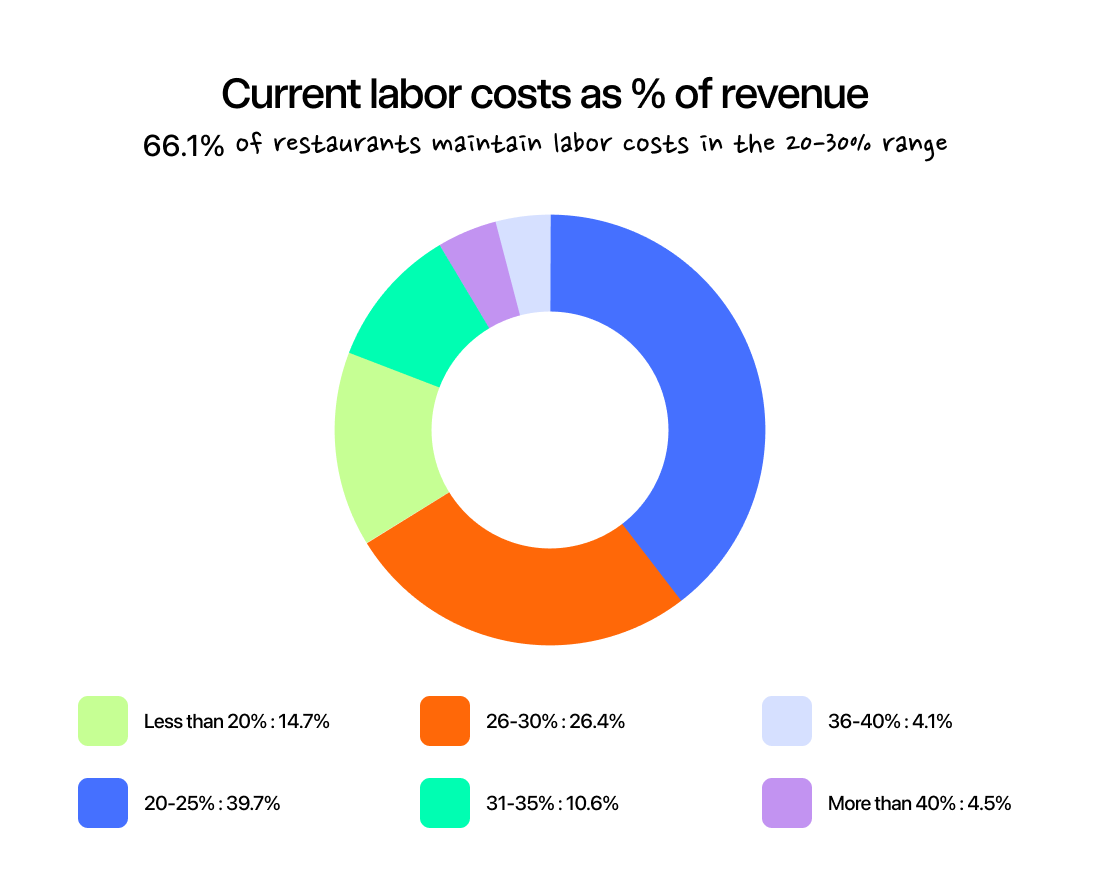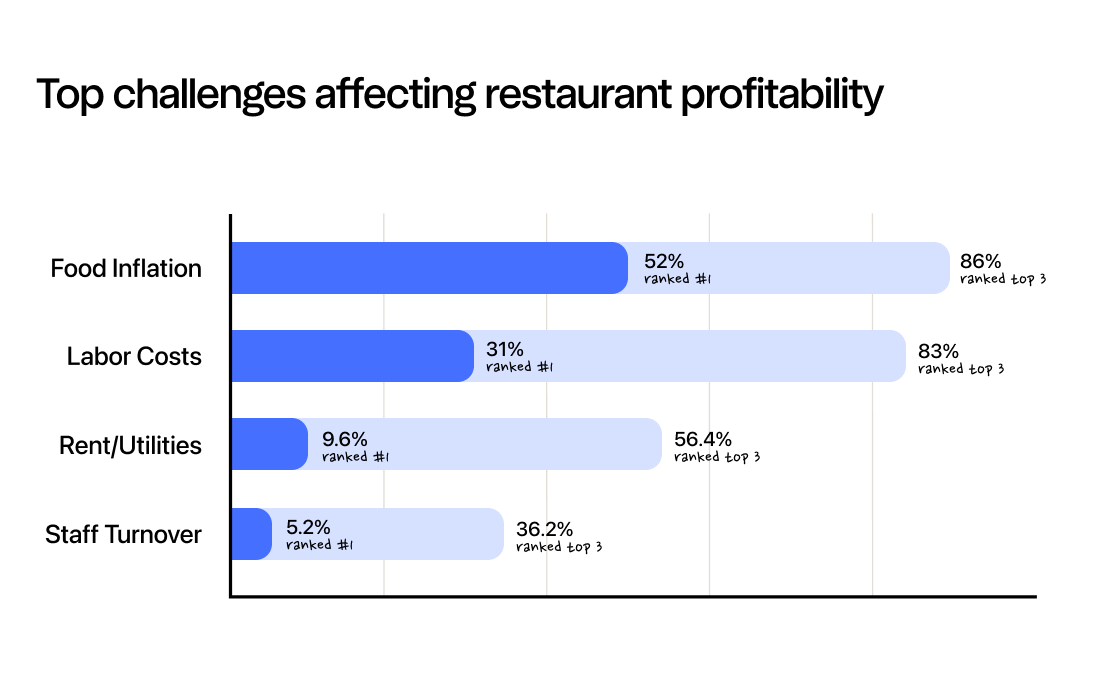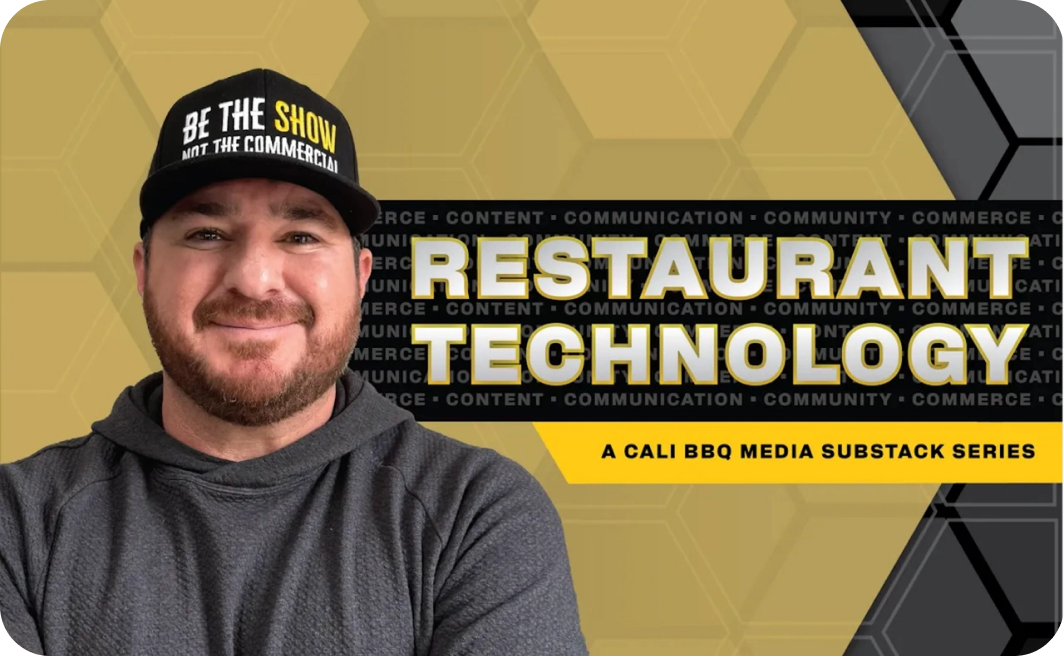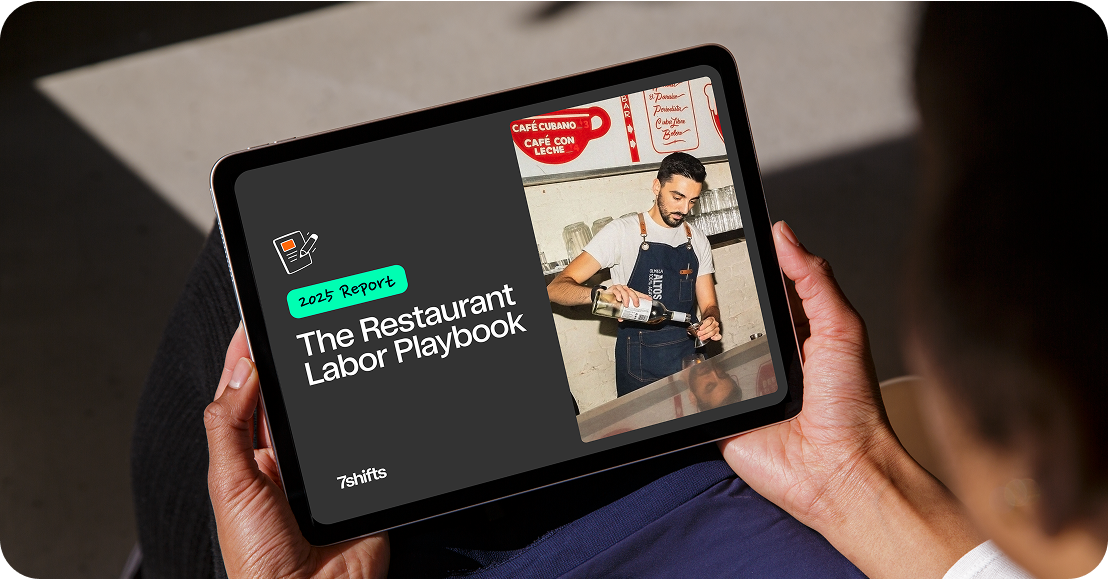|
|
Running a profitable restaurant is a challenge at best. But the journey to profitability can be a nightmare if you don’t have efficient labor costs. In this edition, we’re diving into 7shifts’ just-released 2025 Restaurant Labor Playbook, which reveals how 500+ restaurant professionals experience and navigate their labor goals and pressures.
|
| |
|
|
 |
The % of restaurants *actually* hitting labor targets |
 |
The top labor challenges for restaurants right now |
 |
Getting creative with growth |
|
|
|
|
How much does it cost to replace employees? How much do restaurants spend on labor? And how many insights can you gain in just 6 minutes? Read on to find out.
|
| |
 |
BY THE NUMBERS
|
|
What’s the true cost of employee turnover? According to our research, it depends on the type of employee.
|
| |
 |
$1,056
The average cost to replace a FOH position.
|
|
 |
$1,491
The average cost to replace a BOH position—41% more than FOH.
|
 |
$2,611
The average cost to replace a management position—147% more than FOH.
|
|
 |
REALLY BIG INSIGHT #1
|
|
Only 36% of restaurants hit their labor cost targets.
If you’re struggling to manage your labor costs, you’re not alone. 64% of restaurants don’t achieve their labor goals, and 44% spend more than they planned on labor.
In contrast, a labor cost that’s too low can be equally inefficient. So what’s the sweet spot of labor cost percentages? Our research shows that two-thirds of restaurants keep their labor costs within the 20 to 30% range. Here’s the breakdown:
|
|
|
To manage high labor costs, these three strategies came out on top (ahead of reducing headcount):
🔹 68% of restaurants are cross-training
🔹 45% of restaurants are adjusting labor targets and hours
🔹 41% of restaurants are improving processes
About half of restaurants are also optimistic about technology’s role in lowering the cost of labor—with 21% being very optimistic. Notably, back-led office tech (like automated payroll, inventory management, and staff scheduling) leads the way, while customer-facing tech shows mixed results. Why? Concerns over compromising the personal touch of the dining experience.
📖 Related reading: How to manage your restaurant labor costs
|
| |
 |
REALLY BIG INSIGHT #2
|
|
The #1 concern for restaurant owners is rising food costs.
Food inflation takes the top spot as the #1 concern for restaurants, with 52% ranking it first—outpacing labor costs at 31%. Overall, food inflation and labor costs are among the top three challenges for 86% and 83% of restaurants, respectively. Here’s the breakdown:
|
|
|
The result of higher costs often means higher menu prices. As one general manager notes, “It’s really hard getting a reasonable profit at the end of the month. Food and labor costs are so expensive at the moment because of inflation. Unfortunately, the extra cost has to be passed down to the consumer.”
📖 Related reading: The ultimate guide to restaurant costs
|
| |
 |
FOOD FOR THOUGHT
|
|
Q: What can restaurants try instead of increasing prices?
In a special tariff edition of The Pre-Shift podcast, we sat down with Jay Ashton, Canada’s Restaurant Guy, to discuss whether raising menu prices is the answer to rising food costs. His advice—relevant to any cause of inflation (tariffs or not): explore other options first.
“I’m going to say most restaurants have already ceilinged their pricing right now, meaning they just don’t have much more to go. And they’ll probably have to take it off at different areas of the P&L, and their profits may shrink even a little bit more.
If you do have to increase prices—sometimes, we go there first, but I think that we might have to go there last—like that’s your last-case scenario. A lot of people go there first because it’s easy.”
He proposes a few questions before opting for a price increase:
🔹 Are you driving traffic or enhancing guest experience with the menu?
🔹 Can you make up the money back elsewhere?
🔹 Can you innovate products and use other ingredients?
And the solutions don’t stop here—we cover more insights from Jay further on. In the meantime, this segues right into our next really big insight!
|
| |
 |
SPECIAL FEATURE
|
|
|
|
New Substack from Shawn Walchef
|
| |
Our friends at Cali BBQ Media just dropped something special. Founder Shawn Walchef has launched a free Substack that’s a must-follow for anyone navigating the wild world of modern restaurant ownership. When good folks like Shawn share their expertise, we pay attention. Subscribe now for the inside scoop—exclusive interviews, helpful videos, and restaurant tech news you can actually use. You’ll get full access to their weekly insights, videos, podcasts, and their impressive Restaurant Technology archives.
|
|
|
| |
 |
REALLY BIG INSIGHT #3
|
|
Growth > cost-cutting.
Even when costs are high, the data shows many restaurants are determined to make it work by growing sales. Along with 68% of restaurants raising menu prices, here are the strategies being adopted:
|
|
|
|
|
| |
 |
HEARD!
|
|
Rather than cutting corners in panic, restaurants are getting creative.
Quoting Jay Ashton from The Pre-Shift podcast again (seriously, it’s a great episode—you should check it out), here are three ways restaurants can diversify their revenue, beyond the sale of food.
💡 Newsletters (plus ads)
Placemats, gone digital. That’s how Jay explains the idea of selling local ads in your restaurant newsletter. By compiling an email list from birthdays or WiFi log-ins, and writing up a few regular updates, you can leave some space for ads by partnering with local businesses, like pet stores or body shops.
As for the potential impact? Let’s say you have 3,000 newsletter subscribers and sell 10 ad placements for $500 each. Jay says, “Now, how much food do you have to sell at five grand with a 3 or 5% profit? A shwack of food, right? That’s a lot of food you have to sell. So now you don’t have to increase your menu prices or sell as much during a slow period or in the challenging situation we’re dealing with.”
💡 Uber Eats (but for e-commerce)
Did you know you can sell just about anything on Uber Eats? Jay explains that it’s more than a food delivery platform. It’s an e-commerce platform. You can sell all kinds of restaurant swag on there, from t-shirts to water bottles. And better yet, Jay recommends bundling it up with food—like buy a family meal, get a free t-shirt offer.
💡 Social media influencing
Jay believes that a restaurateur’s credibility makes them a perfect candidate for a social media star: ”That’s what counts when we look at selling stuff. No matter the age, I think restaurateurs can be influencers, and I think they’d be phenomenal influencers, and companies will spend money with you and give you money to share and show your products.”
Listen to the full episode or read the recap.
|
| |
|
|
Check out the rest of the free report
|
|
This is just the first course! Get the main (aka the full report) with sides on cost management strategies, tech adoption insights, and more.
|
|
|
| |
